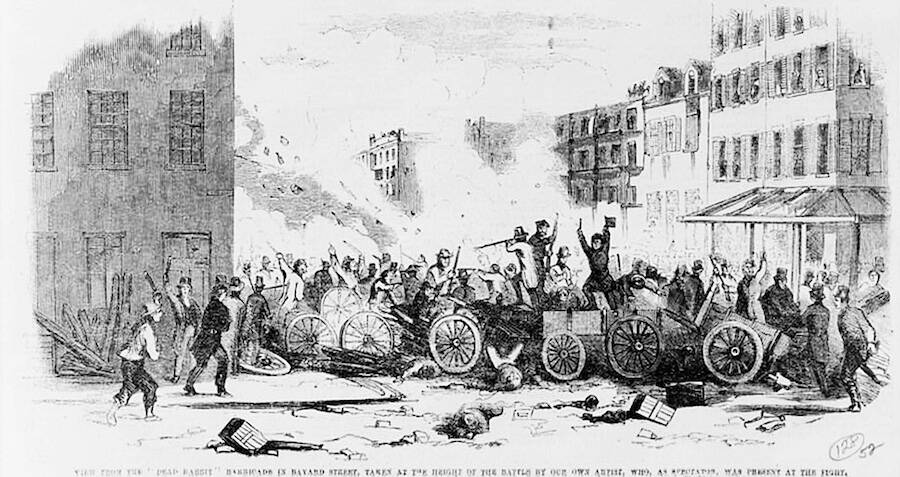The Bowery Boys And The Dead Rabbits

Wikimedia CommonsDrawing of Tammany Hall’s interior, decorated for the 1868 Democratic National Convention.
Nineteenth-century politics were not really centered in New York’s City Hall, but rather in the city’s Tammany Hall, the name of both an executive committee and the physical political headquarters.
Founded in the 18th century and made up of mostly Irish-Americans, Tammany Hall essentially ran the city’s Democratic Party.
Whether the gangs infiltrated the political machine first or the politicians pursued the gangs is debatable. But once the political machines and the gangs met, the two became inseparable — and needed each other as allies.
At the time, the city was rapidly becoming a melting pot where ethnic and political rivalries clashed. Newer immigrants who arrived in the mid-1800s often sparred with “old immigrants” and New Yorkers born on American soil.
Nativists espoused anti-immigration and anti-Catholic sentiments and slowly morphed into a gang called the Bowery Boys.
As native New Yorkers, the Bowery Boys wanted nothing to do with new immigrants. They held down jobs while engaging in illicit activities on the side. They were blue-collar workers who moonlit as xenophobes.

Wikimedia CommonsA depiction of the infamous Bowery Boys.
Under the foundation and leadership of the notorious William Poole, a.k.a. Bill the Butcher, the Bowery Boys sparred most violently against the Irish Dead Rabbits gang, led for a time by John Morrissey.
In 1855, Poole was killed by a member of the Dead Rabbits, using his dying breath to allegedly utter: “I think I am a goner. If I die, I die a true American; and what grieves me most is, thinking that I’ve been murdered by a set of Irish – by Morrissey in particular.”
The Rise Of Irish Gang Rule
On July 4, 1857 — eight years after the anti-English Astor Place Riot left 22 dead at the hands of the police and militia — the Dead Rabbits fought against the Bowery Boys.
While by this point the Dead Rabbits were more known for crimes like pickpocketing and robberies, they were also infamous for their brawls. And this time, the street fight between the Dead Rabbits and the Bowery Boys turned into a bloody riot that killed about a dozen people.

Wikimedia CommonsBarricade at the Dead Rabbits Riot. The Dead Rabbits were the Bowery Boys’ most notable rivals. 1857.
When the Civil War began in 1861, race riots began to break out shortly after draft cards were issued to New Yorkers. Irish gangs took their frustrations with the draft out on their black neighbors by starting fires, smashing engines, and killing likely more than 100 people.
After the Civil War, the most powerful gang left in New York was the Whyos, a collection of thieves and vicious murderers. The Whyos were so dedicated to violence that they devised a pricing system for their assaults.
Here is the price menu, as revealed by one arrested Whyos member:
Punching $2
Both eyes blacked $4
Nose and jaw broke $10
Ear chawed off $15
Leg or arm broke $19
Shot in the leg $20
Stab $25
Doing the big job $100 and up
The Whyos ruled as the kings of New York crime until the 1890s, when the arrival of new gangs drove them out of business in the criminal underworld.
But even before that, some of the most powerful gangs in New York’s history had already begun to stake their claim.





